Free shipping on USA orders over $129!
When we encourage people to get started with nature study, we often say, “Start in your own yard.” Well, there’s a great way to attract birds to your yard, and that’s using bird feeders. Today Karen Smith is with me to talk about bird feeders and which ones to use, and all of the ins and outs of bird feeders.
Sonya: Welcome.
Karen: I can share at least what I know.
Sonya: Well, you know a lot. How many years have you had bird feeders in your yard?
Karen: Since I was a teenager actually. In our current house, it’s been almost 30 years.
Sonya: All right. So I think you know a little bit. But you can share with us. First let’s talk about different types of bird feeders. I know you don’t just have one little thing. You’ve got several different types, right?
Karen: I have several for different reasons. I have two tray feeders, because I have feeders in my front yard and my backyard. So anywhere I look out the window, I can see birds. Tray feeders or platform feeders are basically just what they sound like. It’s a tray that you put seed on. Practically, any type of bird, squirrel, or chipmunks will come to that type of feeder.
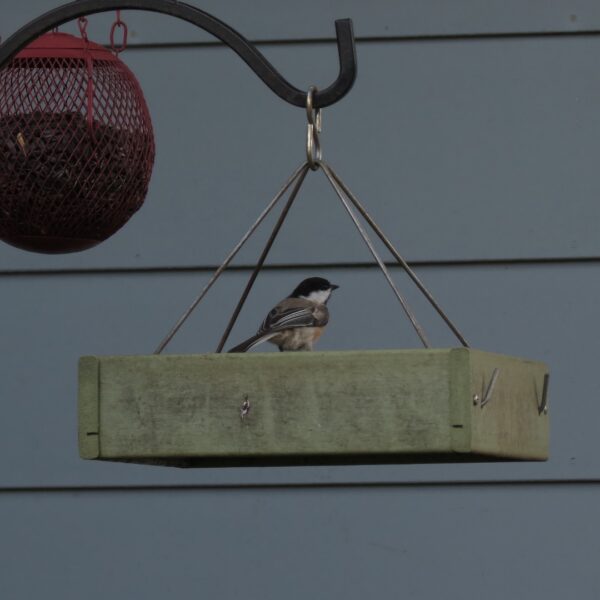

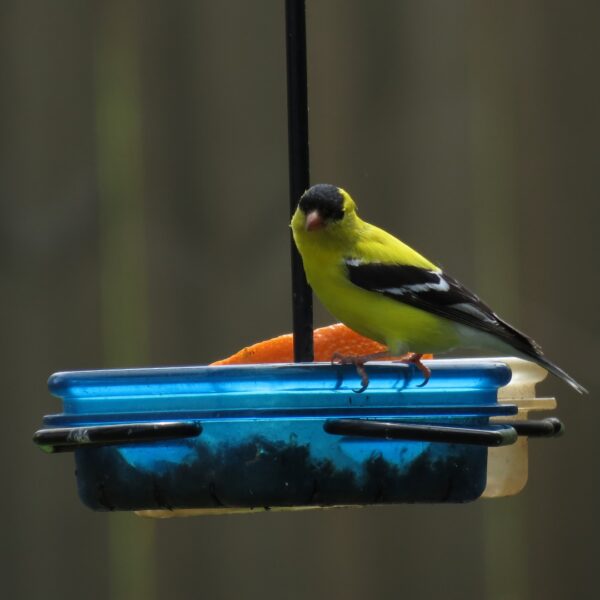

Sonya: Do you try to keep squirrels and chipmunks away, or do you let them at it?
Karen: I have different feeders that are harder for them to access, but I also have the tray feeders where everybody is welcome.
Sonya: That’s free for all.
Karen: Yes. You can’t deter them, so just work with them. That’s really what you have to do.
Sonya: So what other types of feeders do you have?
Karen: I have a wire mesh ball that I put seed in. That’s one of those that the squirrels and chipmunks have a hard time eating from, because they can only get one seed at a time, and there are no perches. So they have to figure that one out. I have a peanut feeder that’s also made out of metal, and it’s got little holes in it. It’s a tube with holes in it so that woodpeckers, chickadees, nuthatches, and those sorts of birds can cling to it and work a peanut out. I also have suet feeders, and those are the ones that I currently have out.
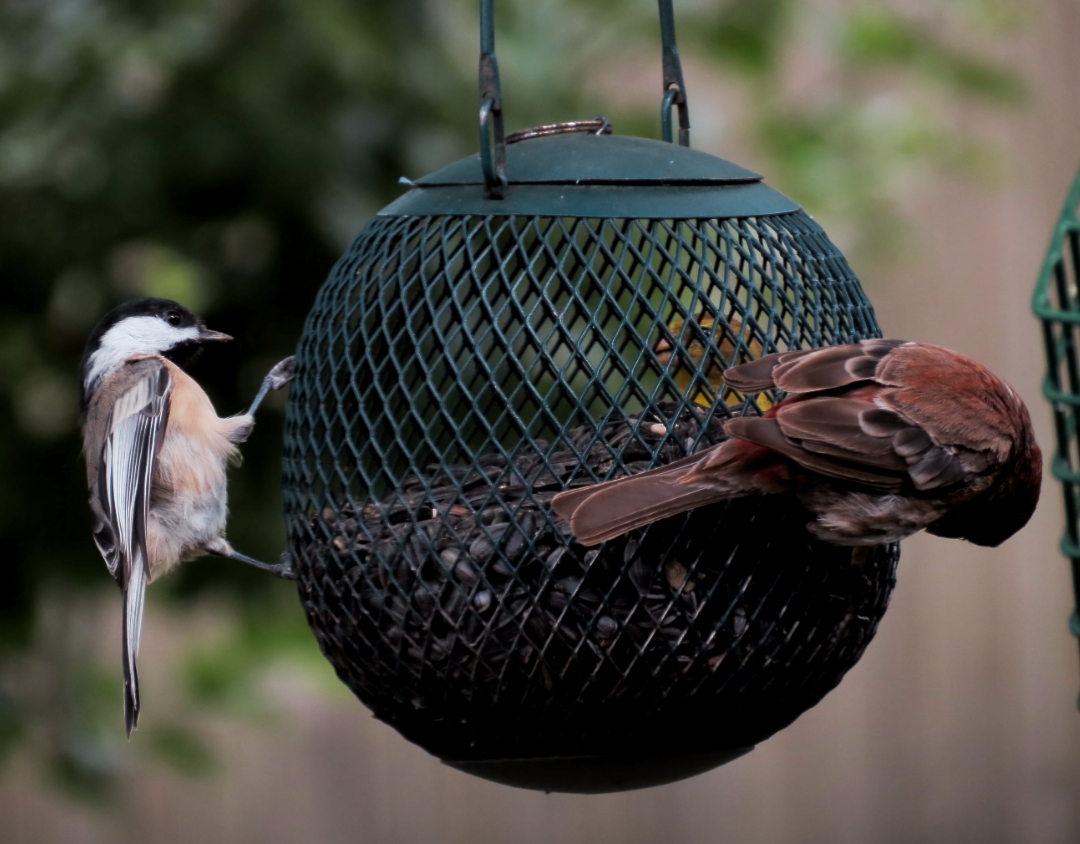

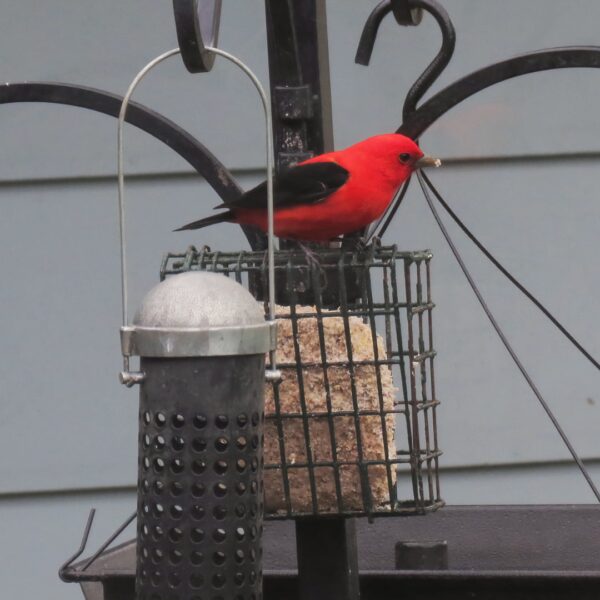

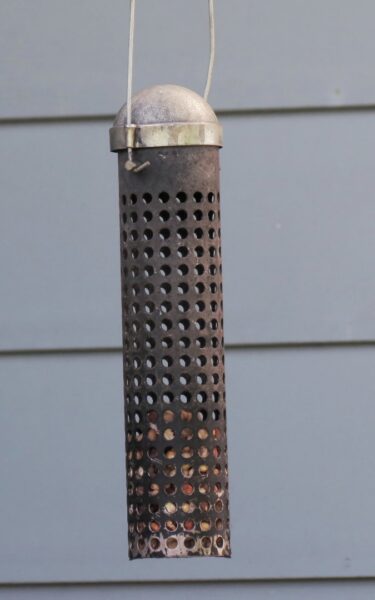

Sonya: Have you ever done hummingbird feeders?
Karen: Oh yes. I have hummingbird feeders also.
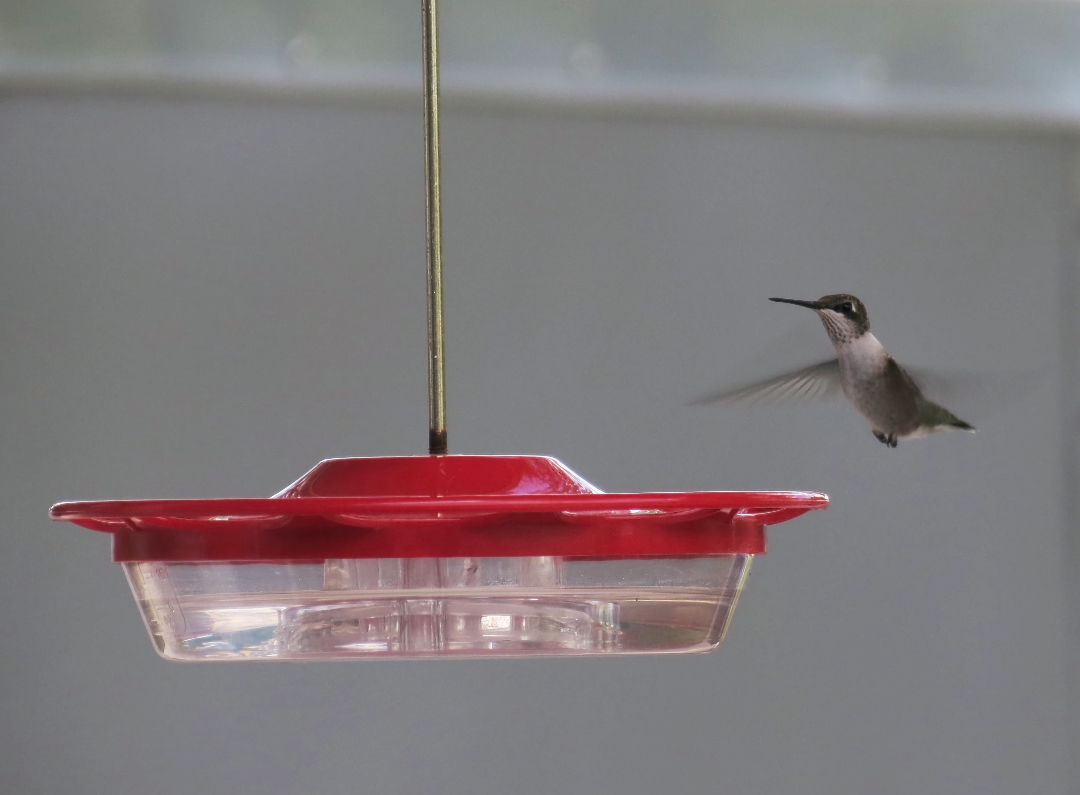

Sonya: Okay. And I remember my oldest, when she was doing a lot of bird feeder stuff, she had something like a thistle feeder. It was almost like a sock I think, if I remember correctly.
Karen: Yes. I’ve had those before too. Those attract different finches and finch-type birds. If those birds aren’t coming to your yard, even if you faithfully keep that feeder out, the seed just goes to waste. I’ve had times when I have those types of birds in my yard, and they eat that seed. Thistle or nyjer seed is the official name of it. And sometimes I can’t keep it stocked. And then I have other times where the sock just sits out there and nothing eats it. So I’ve taken those down right now because I was just wasting the seed.
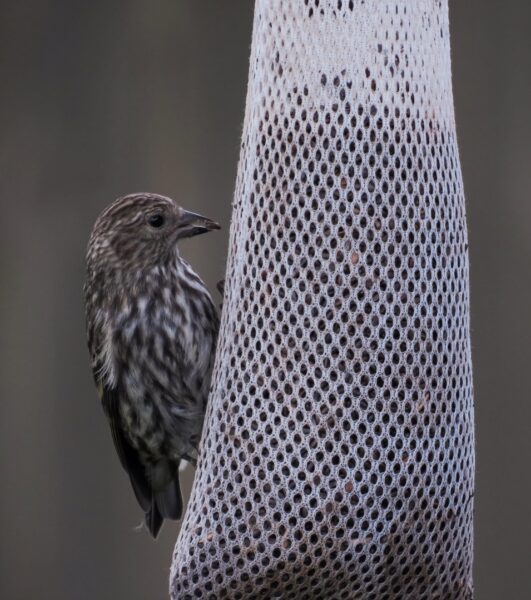

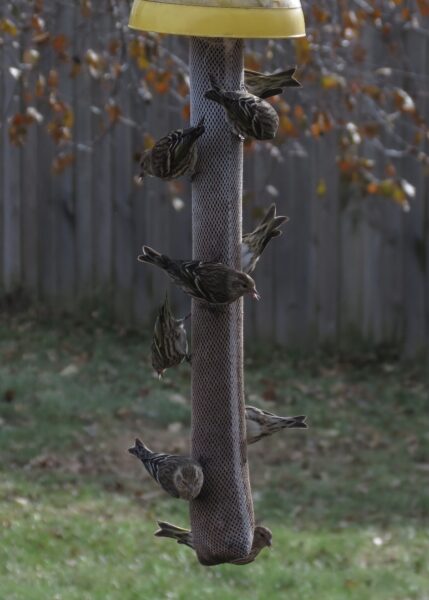

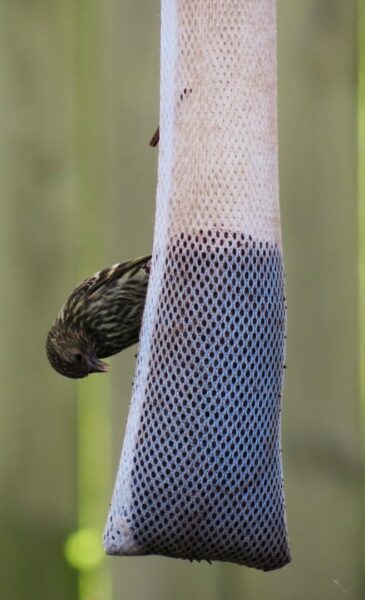

Sonya: Yeah. You don’t want it to mildew and all that stuff.
Karen: Right. You have to keep it clean. You can’t just leave it out there exposed to rain and the weather.
Sonya: Do you wait and see what kinds of birds there are and then feed them their food of choice? Or do you put something up because you want those birds to come? Or a little of both?
Karen: A little of both. The seed that will attract the most birds to your house will be the black oil sunflower seeds. Most of the birds will eat those, and nothing will be wasted. I also use the peanut feeder that I mentioned, and that attracts woodpeckers, nuthatches, and chickadees, those types of birds who can cling. And they really like the nuts, but other birds will not take those. That’s a very specific one. The nyjer seed, the thistle seed, is also very specific for a type of bird.
Sonya: So I suppose, as you said, you could do either way. If you see certain birds then, and you want them to stay in your yard longer so you can observe them, then you can provide that type of food for them. And if you wonder if you could attract some of the other kind, then you can try that feeder for a little while. How long do you think you would need to try it?
When it’s nesting season, a lot of birds come because they need the extra energy for feeding their young. When you get into the heat of summer the number of birds might decrease, because now berries are ripe and other food sources are available.
Karen: You need to try it for a little while, and it depends on what time of the year you put it out. How many birds come to your feeder will vary throughout the year. When it’s nesting season, you may have a lot of birds coming because they need the extra energy for feeding their young, and they need to be able to have the energy to go find what they need to feed their young. But when you get into the heat of summer the number of birds might decrease, because now berries are ripe and other food sources are available, and so not as many come. And so it varies throughout the year. I would keep them out for at least several months to see if you attract anything with those feeders.
Sonya: Okay, now, you talked about the black oil sunflower seeds and you talked about suet.
Karen: Oh yes. I have suet feeders too.
Sonya: And you talked about the nyjer. The thistle seed or nyjer.
Karen: And peanuts.
Sonya: And you talked about the hummingbird feeder. If you go to a store and say “I need some bird seed,” usually you get those little teeny-tiny round balls and a few sunflowers. Is that what it is? I don’t even know what those little balls are. But it’s a mixture.
Karen: It’s a mix, a bird seed mix.
Sonya: What kind of bird seed do you think is the best?
Karen: Black oil sunflower seeds.
Sonya: Just plain. Nothing else mixed in.
Karen: You buy the mixes, what happens? The birds eat the sunflower seeds and they knock most of the other stuff on the ground, and you just waste it anyway.
Sonya: Does anybody pick up what got knocked on the ground?
Karen: Very few.
Sonya: Oh, wow. So you’re wasting your money.
Karen: You’re wasting your money. Black oil sunflower seeds are the ones that most birds will come to, and they will eat those without the waste.
Sonya: Okay. Is there anything else we should avoid when it comes to feeding the birds?
Karen: You know those fun little kind of crafty projects that they have for kids, where you take a pine cone, roll it in peanut butter, and then in the seeds, and you put a piece of yarn on it and hang it in the tree? No birds come to those.
Sonya: Oh, really?
Karen: Don’t waste your time. Get an actual bird feeder and attract the birds that way. Because the birds, chickadees, nuthatches, and woodpeckers can feed from things that don’t have a perch. But if you want to attract cardinals and some of the finches, many of those need a place to perch. So help the birds out.
Sonya: Now, I love the bird feeder, it would be your son, my daughter, and our shared grandchildren, have at their house that’s attached to the window. Talk about that a little bit.
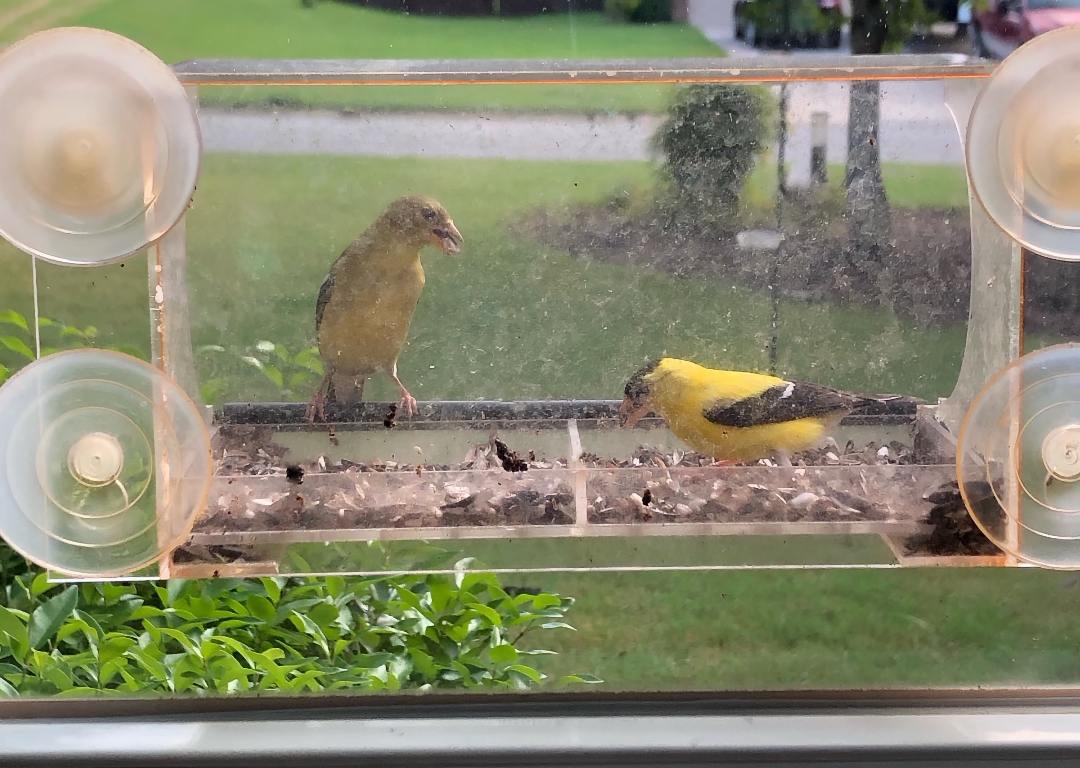

Karen: You can get all different kinds of bird feeders. We talked about the tray feeder, the peanut feeder, and I have the one that’s the wire mesh ball. Those come in different shapes too. You can get them in bowl shapes or whatever. There’s also the traditional type that you think about. I don’t even know what they call them.
But you put the seed in and they’ve got a cover on them, and there are perches around, that type of feeder. Many people use those. There’s the suet feeder, of course. But then there are the ones that attach to your windows. Those can be great for people who maybe live in an apartment and have a balcony. You can attach one of those to the window or the balcony. I know there are usually sliding doors or something like that, but usually there is a side that you can attach a feeder to. Or you can get ones that attach to your deck railing. So there are different options if you live someplace where you don’t have a place you can hang a feeder. Mine are hanging on poles that are designed to hang plants or bird feeders on. It’s a metal pole you drive into the ground, and it’s got hooks on it.
Sonya: Now, the one that you attach to your window, does it have a mirror so the birds cannot see in? Or is it just a blank one?
Karen: I think it’s just a blank one, and the birds become used to your movement.
Sonya: All right, that’s what I was wondering, if it would scare them off. But they become used to it.
Karen: They become used to it, and they become used to a lot of things. Over the years, I’ve had where my dogs can be near the feeder, underneath the feeder where it’s hanging, and the birds hop all around on the ground next to them, or will be on the feeders above them, and they pay no attention to the dogs because they know the dogs aren’t going to do anything to them. So they become used to a lot of things.
Sonya: Wow. So if someone wanted to get started with bird feeders, where would you tell them to start?
Karen: The black oil sunflower seeds. Pick a feeder that you like. Some people like something that’s more decorative. I don’t care because I just want to attract the birds. So if a wire mesh ball is good for you, get that. If a tray feeder works better for you, get that. If you have limited space and you want to bring the birds up close, get one of those feeders that suction cups onto your window. Do whatever suits you.
Sonya: Now, I know you also have a bird bath. Because providing water is important, I think you have mentioned before.
Karen: Yes, the birds come for the water. Some birds will come for the water that won’t come for the seeds.
Sonya: Mmm.
Karen: I actually have four different water sources. I have my pond, which has shallow places in it so the birds can bathe in it. And they get drinks out of it. I have a more traditional decorative bird bath. That’s what I started with. Do you know those trays that you put underneath pots for plants?
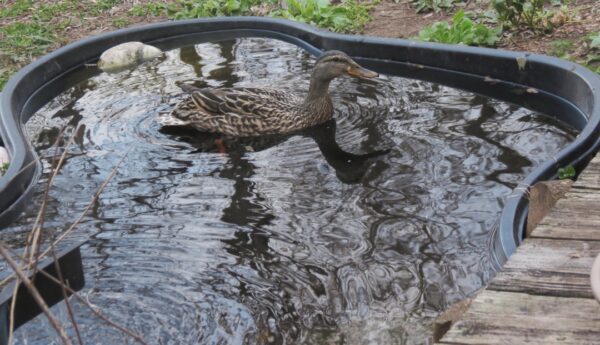

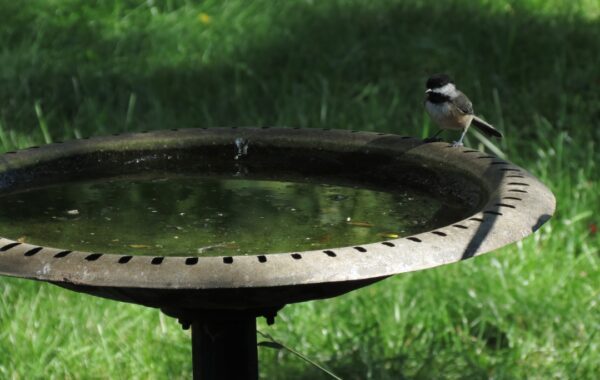

Sonya: Yes.
Karen: I have one of those that just sits on my deck, and it’s pretty shallow. I put water in that and the birds love that. Then I have one that’s heated for the wintertime. It’s just heated enough that the water doesn’t freeze.
Sonya: So it’s not like Jacuzzi heat.
Karen: Right, the birds do not have a hot tub.
Sonya: I can see these birds sitting there in their hot tub. (laughs)
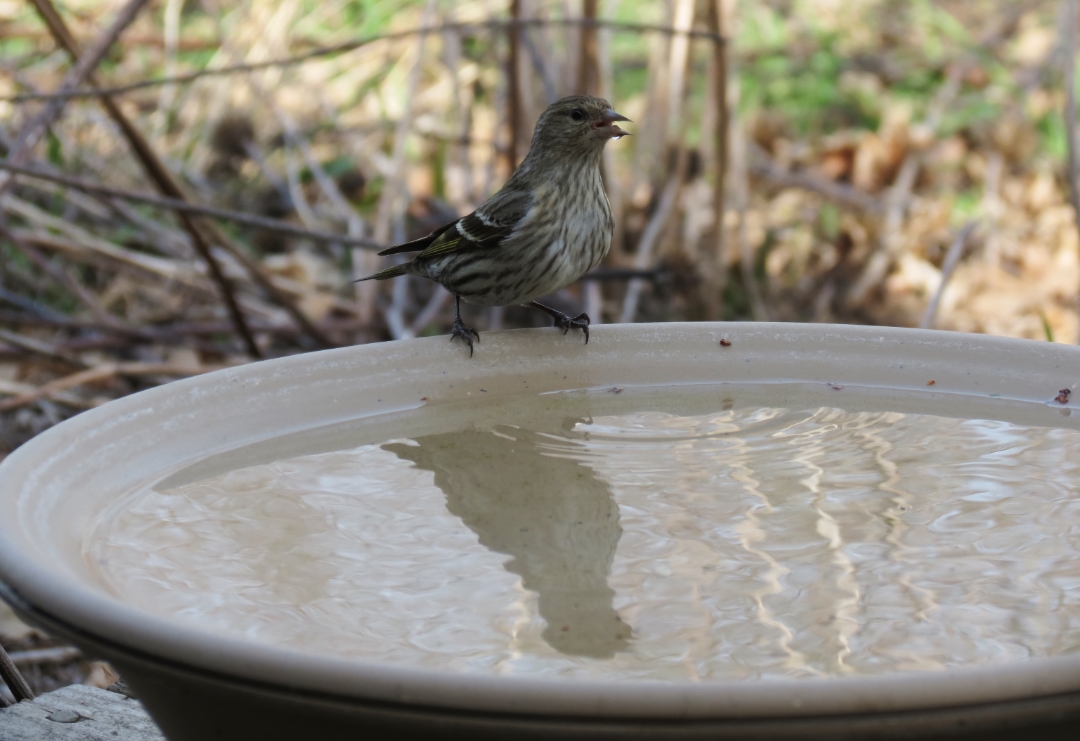

Karen: Though they do bathe in it, which is amazing with the snow around it.
Sonya: Oh, wow.
Karen: So it’s kind of fun to watch. But of those four sources, the one that gets the most used is that plant tray.
Sonya: Just that simple little saucer.
Karen: Yes, and I just leave it on the deck and the birds love that. That one is good because it’s so shallow; smaller birds will also bathe in it where they can’t bathe in the traditional ones. They’re a little too deep for them. So it’s simple. Get a plant tray. Put it on your deck. Put on your patio.
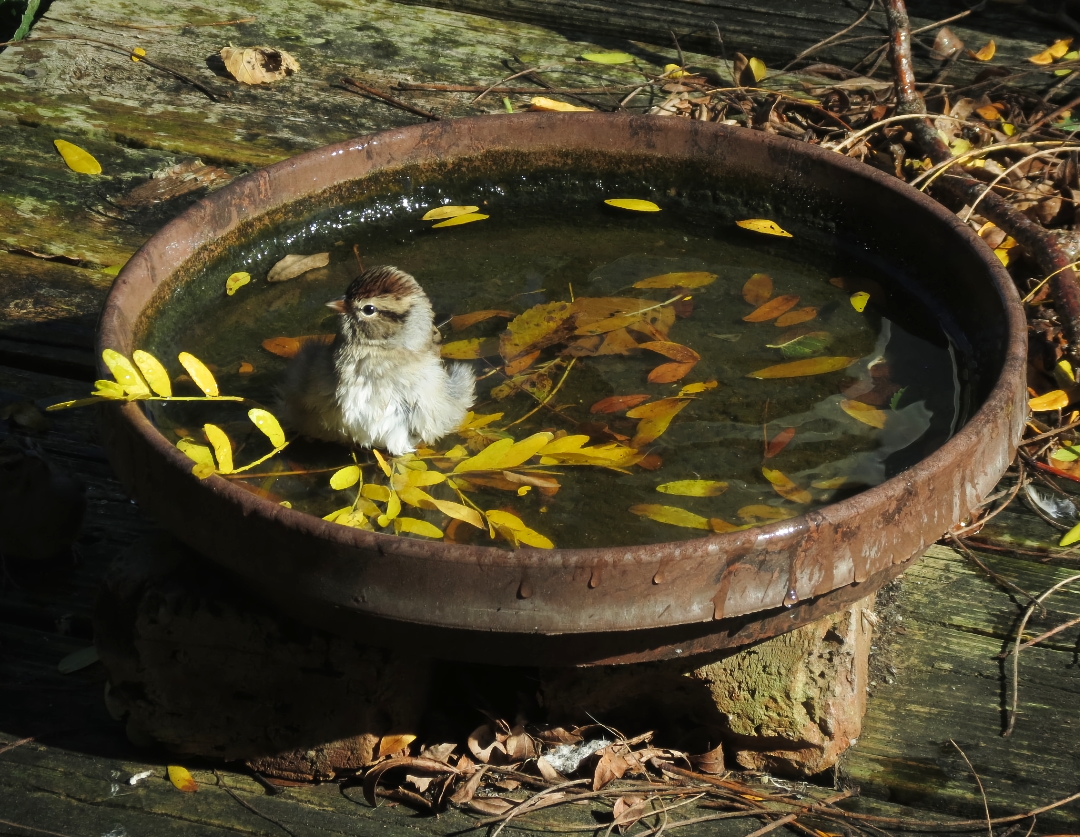

Sonya: And just keep water in it.
Karen: And just keep water in it. Yes.
Sonya: Now, when you talk about seeing the birds bathe, I’m thinking, “Wow, that would be so interesting to watch.” There must be a lot of nature study. I mean, the whole purpose of this is to do nature study. So how do bird feeders and bird baths help with nature study?
Karen: Well, one of the most important things is they do bring nature closer to your window, so that you can observe it, and you can observe from inside. Attracting birds to your yard is something that allows you to do nature study year-round. On those really hot summer days when nobody wants to go outside, or on those cold wintery days the birds still come. You can see them from inside your house. You don’t have to bundle up to go out or melt in the heat when you go out. That is a benefit. And also, as I said, squirrels and chipmunks will come, and at night you can also have other things come. So be aware of that.
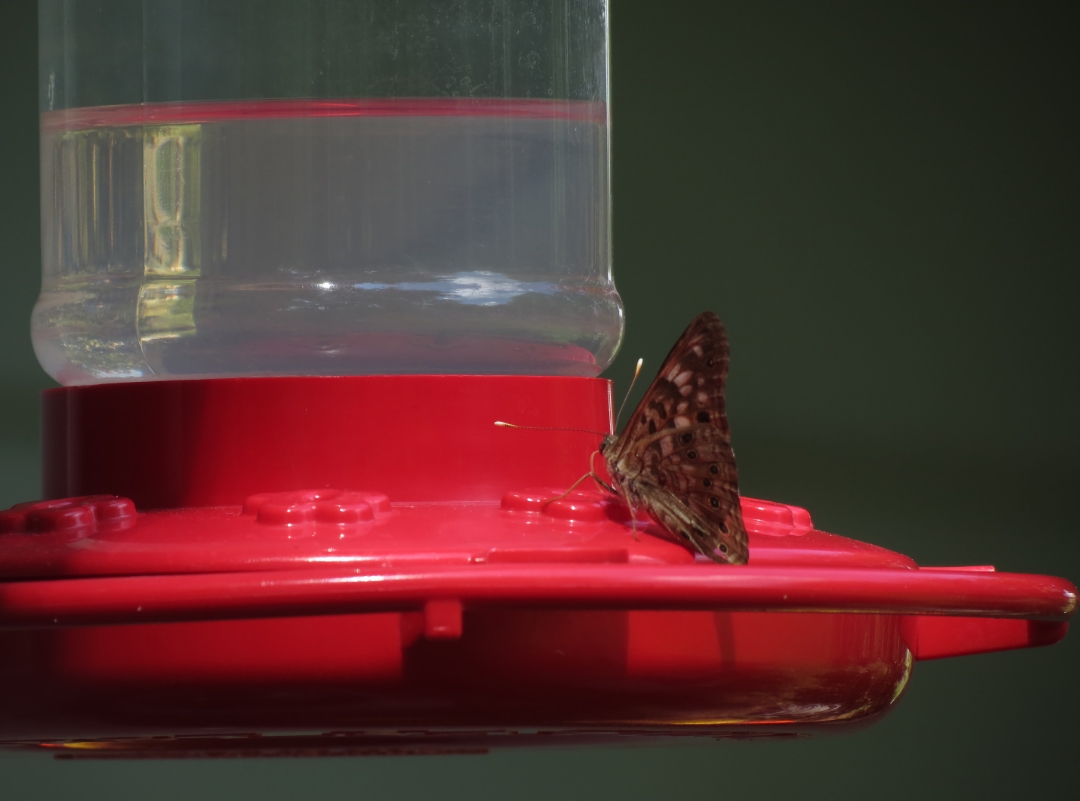

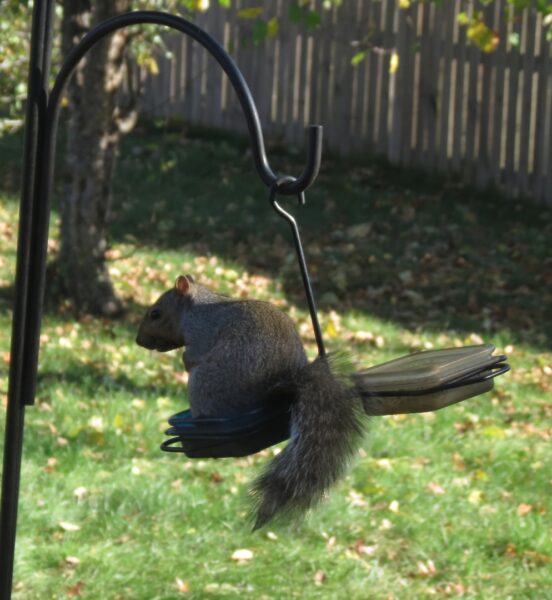

Sonya: As in raccoons and possums or something?
Karen: This year, surprise, surprise, I have a southern flying squirrel coming to my feeders at night, which is a really cool thing.
Sonya: Wow!
You never know what’s going to come to your feeders.
Karen: So you never know what’s going to come to your feeders. By having the feeders there so you can see from your window, you can attract a variety of birds. It will be more than you might think at first. You might start with just the house finches and the house sparrows, but they’re birds too. Let’s feed those. But as you have your feeder out for a longer time, and especially if you have water, and if you can have some movement to that water, even just a dripping sound, it will attract more birds. My daughter is my bird watcher, my dedicated bird watcher. She has seen almost 100 birds just in our yard. Different types of birds. And some of those only come once or twice during the year during migration. She’s observing all of this. Having the pond with the waterfall and the sound of water has attracted many birds to the yard. The warblers come in the springtime; they’re attracted to that. Start small, and you can gradually build over the years if that’s something that delights you. But certainly you will observe a lot: how birds move, the different ways that different birds drink, and how they bathe.
Sonya: Oh, that’s interesting.
Karen: You’ll see how they eat the seeds. Do they stay at the feeder and eat it? Do they take a seed and go off someplace else to eat it? And when they take it someplace else, how do they open that seed and eat what’s inside? There’s so much to observe.
Sonya: Wonderful. Thank you for sharing about all of your knowledge. It’s exciting to see how we can, as you said, with something very simple, really ramp up the opportunities for nature study in our own yard. That’s great. Thanks.
Podcast: Play in new window | Download
Podcast (podcastv): Play in new window | Download
